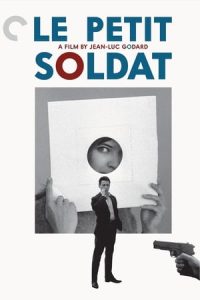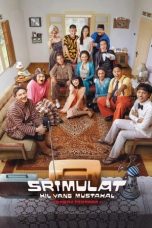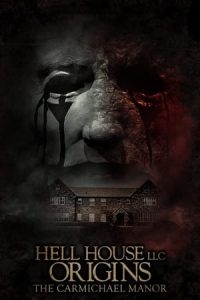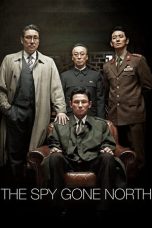- Source: Systems Group
The Systems Group was a group of British artists working in the constructivist tradition. The group was formed after an inaugural Helsinki exhibition in 1969 entitled Systeemi•System. The exhibition coordinator Jeffrey Steele together with Malcolm Hughes, invited the participating artists to form a group in 1970. The Systems Group had no manifesto and no formal membership; it existed for the purpose of discussion and exhibition rather than direct collaboration.
Some group members were influenced by Swiss Concrete artists, including Richard Paul Lohse; some by the Op art of the Groupe de Recherche d'Art Visuel. Others were influenced by the Constructionists: Victor Pasmore, Mary Martin, Kenneth Martin and Anthony Hill. "Above all, they shared a commitment to a non-figurative art that was not abstracted from the appearance of nature but constructed from within and built up of balanced relations of clear, geometric forms."
The group disbanded in 1976 following political differences among its members. Despite this, individual members kept in touch and exhibited together for over four decades.
Membership
The core members of the Systems Group were:
Jeffrey Steele (1931-2021)
Malcolm Hughes (1920-1997)
Michael Kidner (1917-2009)
Jean Spencer (1942-1998)
Peter Lowe (1938-)
David Saunders (1936-)
Peter Sedgley (1930-)
John Ernest (1922-1994)
Gillian Wise (1936-2020)
The following artists exhibited with the group:
Michael Tyzack (1933-2007)
Colin Jones (1934-)
Richard Allen (1933-1999)
Geoffrey Smedley (1927-2018)
James Moyes (1937-)
John Law (1941-)
Norman Dilworth (1931-2023)
Gillian Wise and John Ernest had previously exhibited with the Constructionist Group. Regarding group meetings, although Steele brought the group together and was a key member, Hughes subsequently took over the running of the group, which met regularly at his Putney studio.
Beginnings
In November 1969, nine artists selected by Jeffrey Steele exhibited in an exhibition entitled Systeemi•System: An exhibition of syntactic art from Britain at the invitation of the Amos Anderson Art Museum in Helsinki. The exhibition was organised by Steele's Finnish wife Arja Nenonen (1936-2011) and the exhibiting artists were: Malcolm Hughes, Michael Kidner, Peter Lowe, David Saunders, Peter Sedgley, Jean Spencer, Jeffrey Steele, Michael Tyzack and Gillian Wise. Steele chose artists whose interests were associated with his own developing interest in the theory of syntax in art. Each artist selected a different choice of elements, using some kind of rational principle to construct their work.
Syntactic Art
Syntactic art considers syntactic (structural) relationships between artwork elements more important than any semantic (referential) or pragmatic (expressive) relationships. In other words, in syntactic art the structure and form of the artwork takes precedence over its figurative representation or the viewer's interpretation.
According to semiotician Charles Morris "language is a social system of signs mediating the response of members of the community to one another and to their environment." Additionally "to understand a language or to use it correctly is to follow the rules of usage (syntactical, semantical, and pragmatical) current in the given social community."
Semiotics is the science of semiosis - a process involving the relationships between a sign, what it designates and how it is interpreted by an agent. Semantics is the relationship between a sign and what it designates; pragmatics is the relationship between a sign and how it is interpreted; and syntactics is the relationship between a sign and other signs.
Anthony Hill appropriated Morris's syntactic-semantic-pragmatic framework into his own work, which in turn influenced some members of the Systems Group. 'By syntactic, Hill meant "the relations in the constituent structure, the internal plastic logic", or, put more simply, what happens within the paintings.'
A clear example of syntactic, or constructionist, art is found in Peter Lowe's "Spiral of 8 integers" where, starting from a single central square, a sequence of integers is added until the square root of the sum becomes a whole number, i.e. 1 + 2 + 3 + 4 + 5 + 6 + 7 + 8 =
36
{\displaystyle {\sqrt {36}}}
. Lowe represents the syntactic relationship visually as a spiral pattern of smaller squares, culminating in the larger 6 x 6 square. Although it's possible to interpret his work mathematically, Lowe emphasises that he discovered this particular relationship empirically.
Political Milieu
The Cold War lasted from 1945 to 1991. In the short period of its existence the Systems Group accepted the label of Constructivist, but this term was identified with Russia and hence identified with "The Evil Empire". Quoting Peter Lowe: "In the art world, the CIA was covertly ensuring the supremacy of Abstract Expressionism and Minimalism over Russian Constructivism and Formalism as an element of US Cold War propaganda. Local abstract expressionists proliferated in the UK and Abstract Expressionism was promoted in art schools. Journalists and directors of our national institutions favoured US art and linked their careers to it. There was also a good deal of tabloid comment with Syntactic work being invariably labelled 'cold and clinical'. The term 'system' had acquired negative connotations and it was an act of defiance on our part to use it in relation to our group."
Political Differences
Several members of the Systems Group held the view that all acts were political, therefore art was a vehicle for political ideology. At the time, Lowe could not agree, feeling his visual research was apolitical, having been influenced by the writings of Theo van Doesburg's in his essay "An Answer to the Question: Should the New Art Serve the Proletariat?". Things came to a head at a meeting in 1976, after which Lowe resigned from the group. The remaining members found no resolution to their political differences and disbanded shortly afterwards.
Selected Group exhibitions
= While the group was active
=1969: Systeemi•System: An exhibition of syntactic art from Britain, Amos Andersonin taidemuseo, Helsinki.
1971: Matrix, Arnolfini Gallery, Bristol.
1972-3: Systems, Whitechapel Gallery touring show, London.
1973: Systems II, Polytechnic of Central London, London.
= After the group disbanded
=1978: Constructive Context, Arts Council Great Britain.
1978: Constructivist section, Annual Exhibition of the Hayward Gallery, London.
1980: PIER+OCEAN: Construction in the art of the seventies, Hayward Gallery, London.
1981: Construction in Process, Budrem plant, ul. PKWM 37, Łodź, Poland
2008: A Rational Aesthetic: The Systems Group and Associated Artists, Southampton City Art Gallery, Southampton.
Following the decline of the Systems Group, other groups of British constructivists emerged, such as
Group Proceedings (1979-1983),
Exhibiting Space (1983-1989), journal
Constructivist Forum (1985-1991), and Countervail.
See also
Constructionist Group
Constructivism
References
External links
[1] Constructivist Art in Britain 1913-2005 by Alan Fowler (2006)
Kata Kunci Pencarian:
- General Atomics Aeronautical Systems
- Molecular Systems Biology
- Komputasi waktu nyata
- Soltam Systems
- Nexter Systems
- Waagner-Biro
- WPP plc
- Tata Group
- Northstar Group
- Lockheed Corporation
- Systems Group
- Descartes Systems Group
- Novell
- 645th Aeronautical Systems Group
- Orbital ATK
- Motorola
- Human blood group systems
- Hughes Aircraft Company
- Thiokol
- Elbit Systems
Oppenheimer (2023)
Outrage (2023)
Leaving D.C. (2013)
Hell House LLC Origins: The Carmichael Manor (2023)
Taxi 5 (2018)
No More Posts Available.
No more pages to load.














